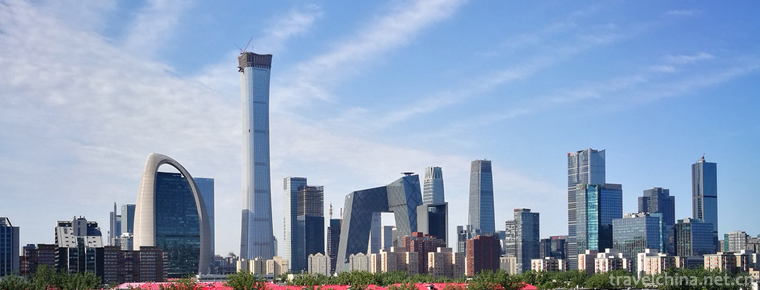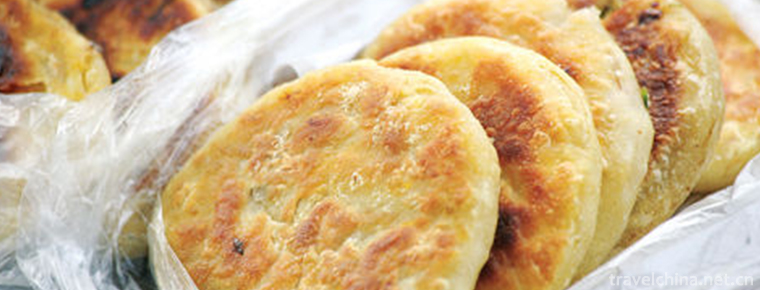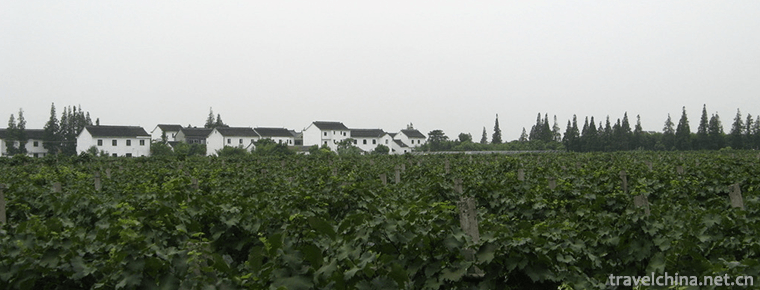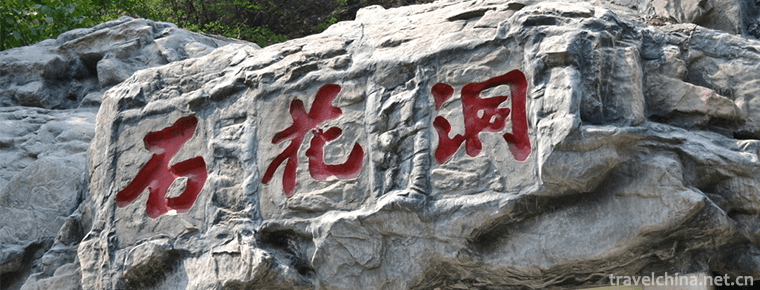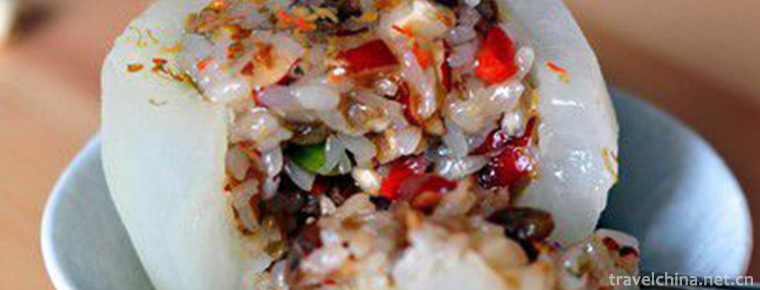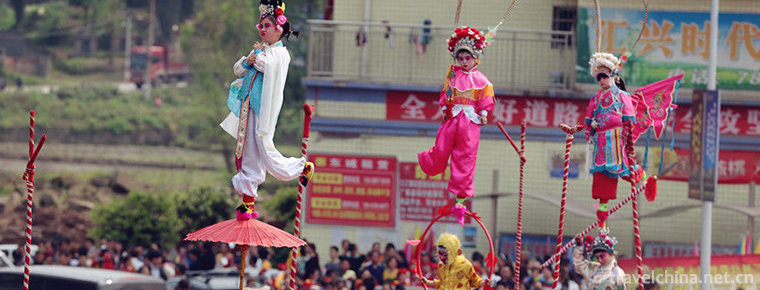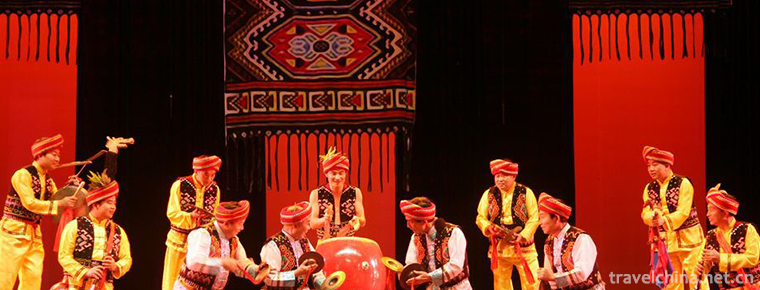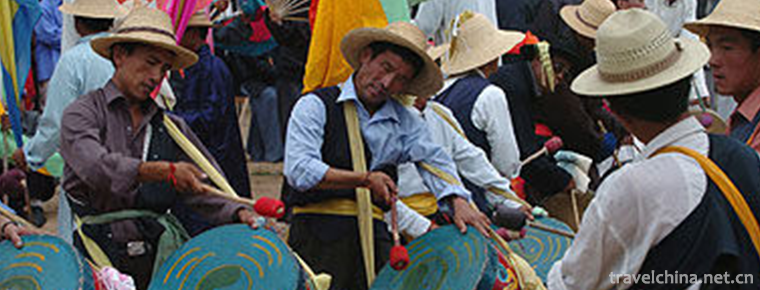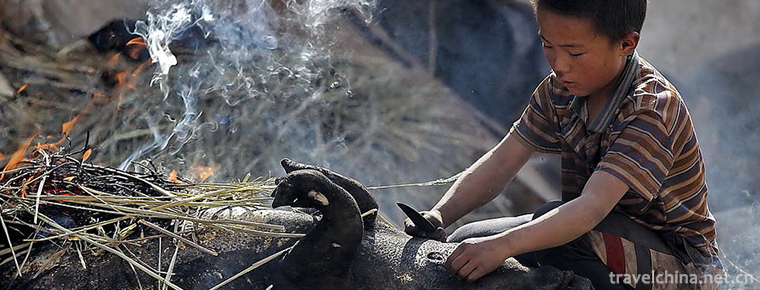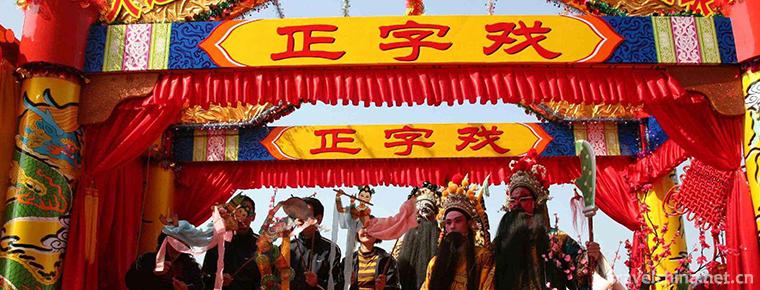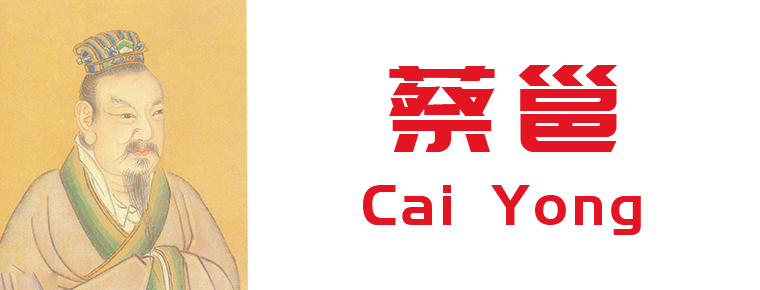Pingle Ancient Town
Pingle Ancient Town
Pingle Ancient Town, located 93 kilometers southwest of Chengdu and 18 kilometers southwest of Qionglai City, is a famous historical and cultural town in China. Pingle Ancient Town is known as "one flat, two solid and three barriers". Baimojiang River, which originated from Yuxiaofeng in Tiantai Mountain, flows through the town from west to north. Old banyan trees, Baimo River, hanging feet built along the river, streets paved with bluestone and endless bamboo sea in Pingle ancient town have jointly cultivated the idyllic landscape feelings of the ancient town people for thousands of years, and conserved the natural and fresh local culture of Pingle ancient town.
Pingle Ancient Town had formed a market town as early as 150 B.C. in the Western Han Dynasty. So far, it has a history of more than two decades. It was the seat of Huojing County in 970 A.D. The renowned "Nine Ancient" style bears the endless cultural charm of Pingle Road, which includes ancient streets, temples, bridges, trees, weirs, fangs, roads, customs and songs. The "scenery outside town" of Pingle ancient town is even more amazing: Lugou natural scenic spot, Jinhua Mountain scenic spot, Jinji Valley scenic spot, Hualiushan scenic spot and Qin and Han ancient post road scenic spot, none of which is not a classic of human civilization.
Historical culture
Pingle Ancient Town, known as "Pingluo" in ancient times, was named after the small green basin surrounded by mountains in the Kaiming period of the Prehistoric King of Shu, which rose and settled because of water conservancy and Xingnong mulberry. According to Shangshu Yugong, Dayu governed the water, "Cai Meng Lu Ping, and Yi Di performance." The Baimo River passing through town is divided into "inner river" and "outer river" with flying sand weirs, forming a unique pattern of "three rivers divided into three rivers". By the time of the Western Han Dynasty in 150 B.C., a market town had been formed, and it has a history of more than 2000 years.
In the three years of Kaibao in the Northern Song Dynasty (970 A.D.), Huojing County was established in Pingluo for more than 200 years. It belonged to Zhili Prefecture of Qiongzhou after the Yuan Dynasty. Pingluo Township was built in the 29 years of the Republic of China (1940 A.D.). The name was used after the founding of New China. In 1950, the town was divided into two parts: town and township. In April 1983, it was called Pingluo Town and implemented the system of town management. In March 1993, it was renamed Pingluo Town. In September 2004, Qionglai City implemented the regionalization adjustment, abolished the system of Xiaba Township, which was adjacent to Pingluo, and merged the original administrative region of Xiaba Town into Pingluo Town, collectively known as Pingluo Town.
geographical environment
Pingle, located in the southwest of Qionglai City under the jurisdiction of Chengdu City, Sichuan Province, is the largest town under the jurisdiction of Qionglai City, known as "one Ping, two solid, three Jiaguan" reputation. The whole town of Pingle covers an area of 70 square kilometers, of which the market town covers 1.28 square kilometers. The ancient town covers 235,400 square meters in Ming and Qing dynasties, and its preservation is up to 85%. The magic of peace and happiness and the land of bullets deduce China's rich and splendid historical civilization.
On the southern Silk Road, it seems that there are still crisp hoofs and brass bells of horses carrying silk; in ancient Sichuan Southern Shu Road, it seems that the hunting banner of Zhuge Liang's Western Expedition and Qilaimeng's capture is still flying; in the mysterious and profound Li's courtyard, it seems that the tribute story of "the first garden in the world" is still chanted; between the wells of Shibanshi City, it seems that Sima Wenjun's romantic love is inherited; Jinhua Mountain in the bamboo sea seems to be telling the myth of "three religions in one"; Lugou Valley in the green mountains and clear waters also seems to show the wisdom and wisdom of Cailun descendants...
social resources
Pingle Town has six communities, 21 administrative villages and 189 villagers'groups. The total population of Pingle Town is 32,000 (of which 93,000 are market towns). It covers an area of 69.94 square kilometers (including 1.28 square kilometers in the town area). The cultivated land area is 22 305 mu, and the per capita cultivated land of farmers is 0.69 mu. In 2003, the GDP of the whole town was 430 million yuan, the fiscal revenue was 4.9 million yuan, the per capita disposable income of urban residents was 4,500 yuan, and the per capita net income of farmers was 3,505 yuan. The proportion of primary, secondary and tertiary industries is 17.7:65.5:16.8. The level of urbanization is 29%.
There are 1 Pingle Middle School, 2 Town Middle School and 2 Central Primary School, 6 Kindergartens (3 Pingle Points and 3 Xiaba Points), 4 Village Primary Schools (2 Pingle Points and 2 Xiaba Points), 1 Central Health Hospital, 2 Town and Township Health Hospitals and 25 Village Health Stations. The popularization rate of tap water is 50%, and that of rural biogas digesters is more than 90%. The city, town and village roads hardened 55.69 kilometers, and the centralized landfill treatment rate of domestic waste in small towns was 100%. In February 2004, it was listed as a national key town by the Ministry of Construction. The famous historical and cultural towns and the beautiful environment towns in the whole country have passed the evaluation. They are one of the 30 key towns in Chengdu.
natural resources
Pingle Ancient Town is located in the plain of Western Sichuan. It has a humid subtropical climate with an average annual temperature of about 16 C and an annual precipitation of about 1300 mm. It belongs to shallow hilly landform, with hills and dams accounting for one third each. The climate in the town area is mild and the rainfall is abundant. Groundwater resources are quite abundant. Bamboo resources are abundant in the whole town and adjacent towns and townships, especially in bamboo resources. As early as the Song Dynasty, Pingle Town was a famous paper town. It is surrounded by mountains and overlooked at high altitudes like a small basin.
tourist resources
Pingle Ancient Town is famous for its primitive neighborhoods and pristine folk customs in Western Sichuan. In the ancient town area, you can enjoy the ancient charm and tranquility that you haven't seen for a long time outside the city. Exclude the impetuosity of modern civilization, see the landscape full of spiritual, flowers and plants, have a heart, forget worries, indulge in mountains and rivers, let time go backwards...
Nine scenes of ancient town
Pingle has been the first town of the ancient tea-horse road and the first post station of the South Silk Road since ancient times. In today's Pingle, we can still see the footprints of history - Nine Ancients: Ancient Street, Ancient Temple, Ancient Bridge, Ancient Tree, Ancient Weir, Ancient Square, Ancient Road, Ancient Style, Ancient Song.
The Ming and Qing dynasties in ancient towns have 235,400 square meters of buildings, with numerous ancient styles. It is well known for its "Qin and Han Culture, West Sichuan Water Township". There are 33 old streets in the old town, with seven curves and eight turns.
Pingle Ancient Town retains the ancient dwellings of Ming and Qing Dynasties. Most of the houses on both sides of the ancient street are wooden structures on the first floor and the first floor. They are usually paved on the lower floor and used as living rooms on the upper floor, which reflects the strong style of Western Sichuan. Although the shops on both sides of Millennium Ancient Lane have changed hands several times, they are still going through. The Pingle Town Government is accelerating the development of tourism and demonstrating to the world the charm of a thousand-year-old town.
In folk culture, simple people created folk songs, River lantern festivals, Niu'er lanterns, liberation festivals, June 6 Guanyin festival, etc.
Walking through the ancient town, visitors will experience the various customs of the ancient streets, listen to the good stories of the ancient bridges, sit in the shade of the ancient trees and trees, watch the rolling waves of water distribution in the ancient weirs, savor the leisurely atmosphere of the ancient residential courtyard, and join in the sound of the ancient song "Bamboo and Ma Chant"... As the first town of Tea Horse Ancient Road, Pingle used to be a lively land-and-water wharf, changing things from place to place, and the ancient town is now glowing with its unique charm. Folk art for thousands of years and residential buildings standing for hundreds of years have been immersed in the water landscape with strong local characteristics, which has become the epitome and symbol of the ancient town of West Sichuan Water Town and deduced a "Qingming River Map" that blends the past and the present. "
Folk Customs Courtyard
Pingle Folk Customs Courtyard, also known as Tiangong Ying Museum, has farmland, small farm yard and playing dam. Visitors can participate in agricultural activities and watch folk cultural performances here.
The main building in the courtyard is the Tiangong courtyard, also known as the Wangjia courtyard. The owner of Wangjiayuan was Wang Zhitong of Dingxian Prefecture of Hebei Province in the Qing Dynasty. His descendants later moved to Hongya County. In 1780, in the forty-fifth year of Qianlong Dynasty, a four-way compound was built at No. 57 Huangjie of Hongya City. Professor Ji Fuzheng, director of the Institute of Local Architecture of Southwest Jiaotong University, praised him as a "treasure of Hongya". In 2003, Hongya County was engaged in urban construction. Although some famous figures, such as Ruan Yisan, Feng Jicai and Ji Fuzheng, appealed to retain the old house, the Wangjia compound was still demolished and the owners piled up the dismantled timber number registration. Three years later, when the Pingle Town government learned the news, it immediately decided to buy the Wangjia compound and relocate it to protect it. Thus, the Wangjia compound was moved from a hundred miles away to rebuild here.
Outside the town
In addition to the ancient town area, Pingle has four scenic spots: Lugou Natural Scenic Area, Jinhua Mountain Scenic Area, Hualiushan Scenic Area and Qin and Han Dynasty Ancient Post Road Scenic Area.
Scenic Spot 1: Breathing Landscape, Lugou Natural Scenic Spot of Nature
Close your eyes and breathe softly. First of all, you feel a kind of incomparable relaxation and excitement. This is the Valley Gallery of Millennium Old Town, located 1 kilometer northwest of Pingle Old Town, 8.6 square kilometers around, with 16,000 Mu covered by bamboo and wood. It enjoys the beautiful name of "20-mile Green Corridor, Natural Oxygen Bar".
Four kilometers into the ditch, a natural stone Buddha is hidden in the bamboo sea with closed eyes and kindness. The body of the Buddha is a hundred-meter mountain peak, higher than the Leshan Buddha (72 meters). The mountain people call it "mountain is a Buddha, Buddha is a mountain", "bamboo is the Buddha's reliance, Buddha is the soul of bamboo".
Along the stream, the huge rock is neat and fractured, and stands separately. It is said that Yang Yan, the emperor of the Ming Dynasty, was better than Sun Quan's sword test stone, which is "the first river in the world" in Zhenjiang, and has more momentum. Zhaizigang goes to the tomb of Tianguan. The giant panda, a national treasure, often haunts nearby.
At the foot of Yuya, "Marshal Well", Xu Qianxian led the Red Army and the Kuomintang Army to fight for seven days and seven nights, that is, to get water for cooking and drinking horses. Red Army battle bunkers still exist on the fish cliffs. Visiting Jianshan, the best scenic spot, you can have a panoramic view of Pingle Ancient Town and enjoy the beautiful bamboo sea in Lugou.
Sporadic sites of ancient paper mills are scattered in the scenic area. The perfect combination of nature and humanity lies in the valley of Lugou.
Scenic Spot 2: Goddess worship, beautiful place - Jinhua Mountain
Jinhua Mountain is one of the top ten tourist attractions in Qionglai City, located one kilometer southeast of Pingle Ancient Town. Lingshan is famous in Qin and Han Dynasty. Since the mid-Tang Dynasty, Jinhua Buddha and Tiangong Temple have enjoyed a high reputation in Western Sichuan. Qishan beautiful waters, with unique topography and landforms and numerous cultural monuments, distinctive features:
One is "one scene at a time". The Great Fogou is naturally bent into a huge "S" shape, just like a natural Taiji map, which adds a bit of mystery to Jinhua Mountain. The steep and quiet stone terrace road and the hanging-feet pavilion with the characteristics of Western Sichuan in green water and green hills... Give people endless reverie.
Secondly, the three religions converge in one mountain, and Confucianism, Buddhism and Taoism form wonderful harmony among countless cliff statues. The precipice stone Buddha on the mountainside cliff is solemn, the temple on the top of the mountain is simple and solemn, and a "skyscraper map" in front of the Great Buddha is a fine product of the cliff statue. There are only two in the country.
Scenic Spot 3: Local Household, Paradise Peach Garden, Hualiushan Scenic Spot of Huang En
Four kilometers west of the ancient town, along the Golden Weir to Huanghua Road for about 20 minutes, through the bamboo sea for more than 10 miles, we arrived at the Hualiushan Scenic Spot, known as "local people, paradise".
In the scenic area, there are many green hills, green trees and creeks. There are "the world's first nursery" of Hualigong tea from Emperor Kangxi; there are winding paths of ten thousand mu bamboo sea; there are relaxed and happy ten-mile corridor; there are mysterious Guantian karst cave. The ancient residential communities of the Qing Dynasty, represented by Li Jiayuan, whose imperial plaque "Emperor Grace Beloved Tin" was bestowed by Guangxu, still retain their primitive features a hundred years ago. Sporadically scattered in the deep bamboo forest, the folk houses in Western Sichuan constitute the strong local characteristics here. The simple people work hard, live a quiet and pleasant farm life. They are the native people who return to the simplicity, feel the countryside, and are the paradise for their body and mind, leisure and vacation.
Scenic Spot 4: Thousand Years Old Road, Searching for the Qin and Han Dynasty Post Road
The site of Yidao in Qin and Han Dynasty is located in Huanggang, Longshan City, Pingle Town. It was one of the main transportation routes from Chengdu, Qiongzhou and Yazhou to Tubo, Dangxiang, Nanzhao and other minority areas, and one of the eleven routes for Wei Gao to send troops to fight against Tubo. Local elders call the Yidao site "Jiannan Road" or "Ma Daozi". Modern people call China's "Southern Silk Road".
The Yidao site is located in the primitive forest of Mount Qilongshan. Although it has undergone thousands of years of erosion and man-made destruction, it can still preserve a relatively complete section of Pingle. It is about two kilometers long, and the road is 4 meters wide and fish-ridged. In the center, a straight central line is made of flat-topped River pebbles, and paved with river pebbles in succession on both sides. It is very firm and shows the wisdom and ingenuity of the designers and builders at that time.
There are walls on both sides of the post road, just like the "Yongdao" since Qin and Han Dynasties. Records of the History of the First Emperor of the Qin Dynasty recorded that the first emperor of the Qin Dynasty "made Ganquan Hall, built Yongdao." Note said: "In the road (road) outside the wall, the Son of Heaven in the middle of the line, outsiders are missing." The walls on both sides of Yongya post road clip the road in the middle, which is completely consistent with the scale structure of "Yongdao" in Qin and Han Dynasties. The walls on both sides of the Yongya post road are built with river pebbles. The height of the road is 1.4m. The walls were originally built to prevent the enemy from stealing transport materials. From the development of road construction history, the wall also plays the role of road maintenance, such as drainage to resist landslides. Just like the mountain highway nowadays, it often builds a strong stone ridge on the side of the road under the steep slope of the mountain rock. The post road was built along the direction of the mountains. When it was intact, it seemed like a Great Wall, winding between the mountains in southern Sichuan.
Scenic Spot 5: Emerald Manor with Beautiful Scenery and Integration of China and the West
The Emerald Manor is located at the junction of "Three Golden" scenery in Pingle Town. It is built along the river and backed by Lion Mountain. The manor is surrounded by rattan, willow, bamboo and wood, shaded by green trees. The lawn in the manor is green and green. Guiyuan Garden, Banana Garden and Loquat Garden complement each other. The underground hot springs are bathed in dust, and the water singing hall is surrounded by lings. The five generations of the same hall, four-way courtyard and European-style architecture blend with the west. Since its inception, the park has been listed as the "International Youth Song Qingling Foundation Base" and is now one of the top ten tourist attractions in Qionglai City.
Scenic Spot 6: Original Ecological Landscape, Visiting the Jinji Valley of the Historic Site Hiking
To the west of the ancient town, along the Baimo River, about three kilometers away, a small river converges into the Baimo River. The River comes out of the ditch. The ditch is an arch bridge. The front and back of the bridge are cockheads and cocktails. This is Jinji ditch. The old bridge you see is the Golden Rooster Bridge built in Guangxu 10 years ago.
Golden Rooster Trench is 15 miles inside and 30 miles back and forth. Along a small slate road beside the bridge, the bamboo forests are stacked verdant, with strange peaks and rocky rocks on both sides. Bamboo forest cover, water play, step green, taste game... Visit the historic sites (ancient paper mill), search for people in the mountains... The scenic spots are mainly highlighted by bamboo sea, rock climbing, high-altitude cable bridge and fitness walk, and the core value of the scenic spots is "outdoor sports".
Jinji Valley is more immortal couple Muyun Bridge. It is said that the high-altitude narrow-bottom Canyon Tourism cable bridge with the most difficult structure, the longest span and the highest distance from the ground is 318 meters long, 1.5 meters wide and 162 meters from the ground. It can be regarded as the biggest highlight in the scenic area.
Take the necessary supplies, such as kettles, tourist backpacks, medicines, etc., in addition to their own snacks, but also responsible for carrying some picnic food. Then, under the guidance of the guide, we can carefully taste the original ecological ditch and have a picnic in Jinji ditch.
Scenic Spot 7: Country Life, Qikou Scenic Spot of Water Paradise
The scenic spot is located in the lower section of Baimo River on the northwest edge of the ancient town, only one water away from Shuikou Town. Jingnei River is wide, water and sky are uniform, bamboo raft rafting in the river, speedboat surfing, green bamboo forests on the shore, winding paths are secluded. Deep in the bamboo forest, Qikou Country Club, Chilin Villa, Silver carp Villa and other special farm pleasures are hidden among them. Wild River fish, roast sheep and roast rabbits make you linger and forget to return. They are the water paradise for modern people to enjoy leisure fishing, boating and surfing.
Tourist guide
Admission ticket
There are no tickets for free tours in the ancient town, but tickets are required for some scenic spots around the town.
Among them, Lugou Natural Scenic Spot ticket: 15 people; Jinjigou ticket: 30 people.
Traffic information
transit
Chengdu Jinsha Station - - - - > Qionglai - - - - > Pingle
Chengdu Chengbei Passenger Transport Center (North Railway Station) - - - > Qionglai - - - - > Pingle
Shiyangchang Central Station - - > Qionglai - - - - > Pingle.
Mianyang, Ya'an and Leshan - - > Qionglai - - - - > Pingle
From 8:00 to 18:00 at Chengdu Xinnanmen Bus Station, there are buses to Qionglai City. You can take a minibus at the entrance of Qionglai Long-distance Station, and you can get to Pingle Town for 4.5 yuan. There are also buses directly to Pingle Town at Xinnanmen Bus Station. Comparatively speaking, in the peak season of tourism, it is easier to travel to Qionglai by bus at Jinsha Station. There are many cars from Qionglai to Pingle Ancient Town. You can choose to take the van at the entrance of Qionglai Long-distance Station.
Self driving
Chengdu-Pingle Best Self-Driving Route: Chengdu-Wuhou Jinhua-Shuangliupeng Town-Jinqiao (Zaoer) -Chongzhou Yingjiang-Sanjiang-Dayishaqu-Dongchang Town-Anren (Ancient Town) -Tangchang (Ancient Town) -Shang'an Town-Qionglai-Wolong-Pingle
Chengdu-Pingle Best Self-driving Line (Shorter): Chengdu-Wuhou Jinhua-Shuangliupeng Town-Jinqiao-Chongzhou Yingjiang-Sanjiang-Dayishaqu-Dongchang Town-Anren (Ancient Town) -Yuanxing-Gaoshan-Qionglai City-Wolong-Pingle
Board and lodging
Food: Milk soup noodles, potted chicken, Xuewang, River fish, rare fungi, bamboo shoots, roast chicken, soup and white meat.
Characteristic cuisine: Folk method of Pingle Town made of "Yeerbao", oily but not greasy, tender meat filling delicious.
Accommodation: There are many old town Inns Near the street and river in Pingle ancient town. They are beautiful in environment and affordable in price. They can be booked on Youtian or Rural Youtian Internet. If they go before the holidays, advance booking is essential.
Shopping
Several things to buy in Pingle: bamboo woven porcelain, Lushan ecological bacon, Hualigong tea, homemade tofu and so on. With such a pleasant tour, the journey of peace and happiness can be basically over. "A thousand people, have a thousand impressions of peace and happiness in their hearts." I hope you will like it and miss it. Tianfu Pingle, peace and happiness! An ancient town leading to history, a bay of River washing human nature, an ancient town of time back! Walk into Pingle, you will enter the elegant mood of the western Sichuan water village; cross the ancient town, you will go through more than two thousand years of Qin and Han history!
Porcelain bamboo knitting, also known as "bamboo silk button porcelain" produced in Chengdu, is a unique variety of bamboo sponge handicraft. It is made of porcelain utensils, bamboo silk as fine as hair and bamboo slippery as silk. The selection of bamboo silk used for weaving ceramic bamboo is very strict. Among the more than 100 kinds of bamboo produced in Sichuan, only Cibamboo grown in Qionglai

Mountains has been selected, and it must be a "two-year-old" strong bamboo with a pitch of more than 66 centimeters and no scratch marks. After repeated selection and processing of 50 kilograms of Cizhu, the final product was 400 grams of bamboo silk. The finished warp is as thin as silk, and the weft silk is as tight as hair. It is uniform in thickness and moderate in flexibility. The technical requirements of raw material production are very high. In addition to traditional vases, coffee sets, tea sets, rice bowls and other products, bamboo woven crafts with porcelain bodies also include jewelry boxes, stationery, pen holders, bamboo platters, etc.











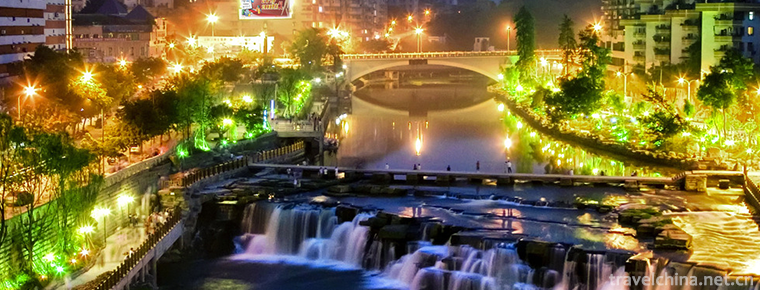
-
Huizhou cake
Huizhou cake, originally named "jujube mud crisp baked bread", is a traditional feature in Huizhou area, Anhui Province. .
Views: 223 Time 2018-11-27 -
Malu Grape Theme Park
Malu Grape Theme Park is located in Malu Town, Jiading District, Shanghai. It is a grape industry base and agricultural tourism demonstration site that integrates grape planting, production, scientifi.
Views: 116 Time 2019-02-06 -
Shihuadong National Geological Park
Beijing Shihuadong National Geopark is located in Cheying Village, Nancheng Town, Hebei Province, Fangshan District, Beijing. It is a seven-storey karst cave 55 kilometers away from Beijing.
Views: 130 Time 2019-02-08 -
Eight treasure pear pot
Babao pear can is a delicious name, belonging to Shandong cuisine. Babao pear cans are exquisitely made and beautifully shaped, mostly for beets at banquets. If high-grade banquet, can be filled in sm.
Views: 236 Time 2019-03-26 -
Sanhui Pavilion Club
Sanhui Caiting Pavilion is a local traditional folk cultural activity that performs in streets or squares on March 16-18 of the lunar calendar every year. Its artistic form of performance is ingenious.
Views: 113 Time 2019-06-12 -
Tujia people slip away
Dalaozi is an ancient folk instrumental ensemble which is the most widely spread in Tujia area. It has a long history, a wide range of music cards, exquisite skills and rich expressiveness. It is a un.
Views: 117 Time 2019-06-23 -
Naton Festival of the Turkish Nationality
Naton is a temple fair where the Tu people in Sanchuan area of Minhe County, Qinghai Province perform Nuo Dance (the first dance) and Nuo Opera (the mask dance) in order to dispel diseases and calamit.
Views: 251 Time 2019-06-23 -
Year of the Yi Nationality
In the year of the Yi people, the Yi language is called "Kusi", "Ku" is the year of the Yi people and "Si" is the new year. It means "New Year". It is a traditi.
Views: 210 Time 2019-07-12 -
Orthographic drama
Zhengzi opera, originally known as Zhengyin opera, is singing in Zhongzhou Mandarin. It is an ancient and rare opera with many voices. In the early Ming Dynasty, one of the Southern Opera was introduc.
Views: 118 Time 2019-07-25 -
Cai Yong
Cai Yong (133 to 192 years), Zi Bo. Chen Liu Jun Xian county (now Henan Qixian County South) People. Eastern Han Dynasty Famous ministers, writers, calligraphers, talented women Cai Wenji Father..
Views: 148 Time 2019-09-14 -
Rongxian Gaoshiti Forest Park
The landform of Gaoshiti Forest Park is peculiar, with boulders, odd peaks, valleys and streams forming a typical natural landscape of low mountain landform in southern Sichuan. Gaoshiti Forest Park covers a total area of 182.13 hectares. It was approved as a provincial forest park by the provincial forestry department in 1993..
Views: 170 Time 2020-10-15
